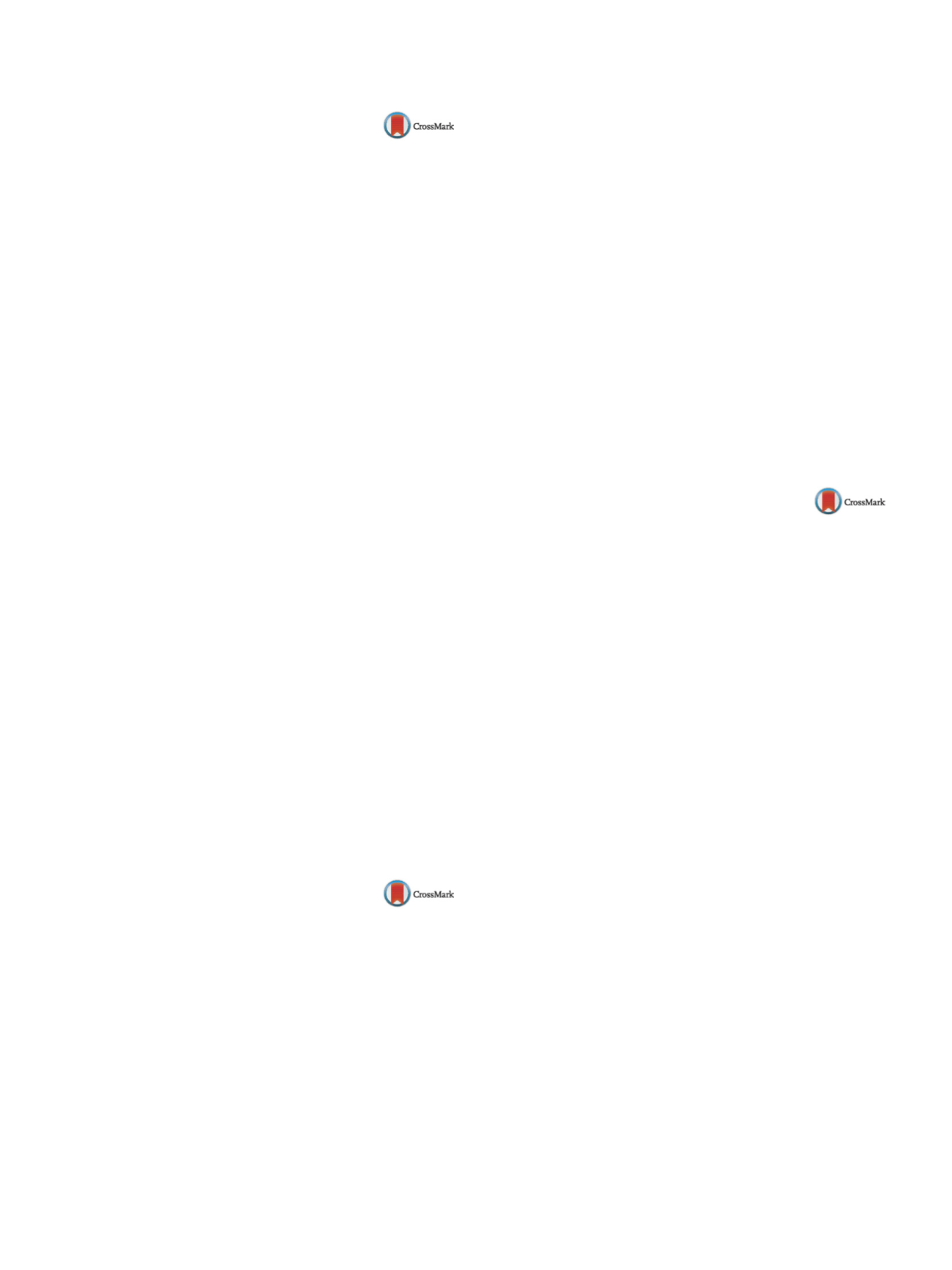

S240
25th European Congress of Psychiatry / European Psychiatry 41S (2017) S238–S302
EW0393
Differences in perceived reasons for
and barriers to, seeking help for
depression between people with and
without heightened depressive
symptomatology
B. Lienemann
1 ,∗
, S.T. Jason
21
University of Southern California, Department of Preventive
Medicine, Los Angeles, USA
2
Claremont Graduate University, Department of Behavioral and
Organizational Sciences, Claremont, USA
∗
Corresponding author.
Introduction
Depression is treatable, but many people with
depression do not seek help. When studies are conducted assessing
barriers to and reasons for help seeking, it is common to combine
responses from people with and without depressive symptomatol-
ogy.
Objectives/aims
The goal of the current study was to assess if
people with and without heightened levels of depressive symp-
tomatology perceive reasons/barriers similarly.
Methods
Prior to the main study, two pilot studies were con-
ducted which resulted in sets of 10 reasons and barriers rated as
those participants were most aware of as influencing their deci-
sion to seek help for depression. Participants (
n
= 520) rated the
importance of these reasons/barriers to their decision regarding
help seeking. Two groups were created based on their Beck depres-
sion inventory-II score: no tominimal andmild to severe depressive
symptomatology.
Results
Although, the order across the reasons/barriers varied
between the groups, the most important reason for both groups
was seeking help to enjoy life again, while the most important
barrier for both groups was negative side effects of depression
medication. The no to minimal group rated reasons to seek help
as significantly more important to their help seeking decision
process than the mild to severe group, while the mild to severe
group rated barriers to seeking help significantly more important
to their help seeking decision process than the no to minimal
group.
Conclusions
Greater importance of barriers to seeking help
could partially explain why help seeking decreases as depres-
sive symptomatology increases. Interventions should increase the
importance of reasons to seek help.
Disclosure of interest
The authors have not supplied their decla-
ration of competing interest.
http://dx.doi.org/10.1016/j.eurpsy.2017.02.007EW0394
Correlation between chronic somatic
co-morbidities and prognosis of
major depressive disorder
N. Lucev
1 ,∗
, A. Vuk
1, I. Simunovic Filipcic
2, I. Filipcic
11
Psychiatric hospital Sveti Ivan, Department of psychiatry, Zagreb,
Croatia
2
The University Hospital Centre Zagreb KBC Zagreb, Department of
Psychological Medicine, Zagreb, Croatia
∗
Corresponding author.
Introduction
Depression and somatic disorders are closely inter-
related. Depressed mood is recognized to contribute to the
development and progression of wide range of somatic diseases,
while at the same time somatic diseases may increase the risk of
depression. Co-morbidity research still represents huge research
and clinical challenge to contemporary psychiatry and medicine.
Objectives
To check whether the correlation of NSC and poor
prognosis of MDD treatment is merely the consequence of age and
duration of illness.
Methods
We investigated a cross-sectional sample consisting of
290 psychiatric diagnosed with MDD. Outcome was the number
of psychiatric rehospitalizations (NPR) since the first diagnosis of
MDD treatment success. Predictor was NSC. Covariates controlled
were sex, age, BMI, marital status, number of household members,
education, work status, duration of MDD, CGI-severity of MDD at
diagnosis, treatment with antidepressants and anti-psychotics.
Results
After adjustment for all confounders, mediation analy-
sis revealed insignificant indirect effects of NSC on NPR through
patient’s age (
P
= 0.296) and duration of MDD (
P
= 0.180). Direct
effect of NSC was significant and clinically relevant (
P
< 0.001).
Effect of NSC was significantly moderated by duration of MDD
(
P
= 0.019). NSC and NPR were not significantly associated if MDD
lasted for less than a year. The more MDD lasted the stronger was
correlation of NSC and NPR.
Conclusion
Correlation of NSC and poor prognosis of MDD is not
a mere consequence of patient’s age and duration of illness. To
treat MDD effectively we have to treat simultaneously somatic co-
morbidities.
Disclosure of interest
The authors have not supplied their decla-
ration of competing interest.
http://dx.doi.org/10.1016/j.eurpsy.2017.02.008EW0395
From pilot project to RCT – Music
intervention to improve sleep quality
in depressed patients: A mixed
methods study
H.N. Lund
∗
, A. Heyman-Shlaczinska , I.N. Pedersen
Aalborg Psychiatric Hospital, Klinik Syd, Aalborg, Denmark
∗
Corresponding author.
Introduction
Insomnia is a common sleep disorder for patients
with depression. This has amajor impact on the quality of life for the
individual. A randomized controlled trial (RCT) will address the use
of music as a non-pharmacological treatment to reduce insomnia
in depression.
Objectives and method
The aim is to investigate, whether music
listening is effective to:
– improve sleep quality;
– reduce symptoms of depression;
– improve quality of life;
– limit or replace medication.
A RCT will address the use of music as a treatment modality in
depression using an explanatory mixed methods design. In the first
phase of the study, patient data is collected from 3D accelerometer,
log files from a new app for iPad called ‘the music star’ and ques-
tionnaires (MDI, HAM, PSQI and WHO-QOL). ‘The music star’ is an
app for iPad used to select music from special designed playlists
developed by Danishmusic therapists in psychiatry. An exploratory
follow-up (semi-structured interviews) aims to explain quanti-
tative results from accelerometer and ‘the music star’ log files.
Participants enrolled are registered at the clinic for unipolar and
bipolar affective disorders at Aalborg University Hospital – Psy-
chiatry. The participants test whether a sound pillow and special
designed playlists is effective to reduce insomnia in depression in
a 4 week period.
Results and conclusions
A feasibility study has been conducted on
11 participants showing positive results in terms of participation
and sleep quality.
Disclosure of interest
The authors have not supplied their decla-
ration of competing interest.
http://dx.doi.org/10.1016/j.eurpsy.2017.02.009

















